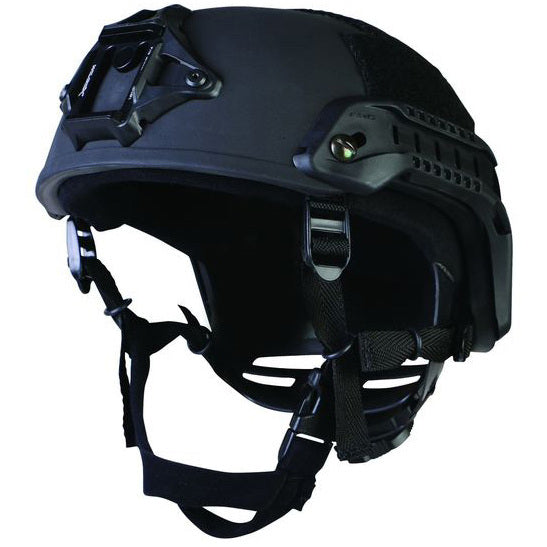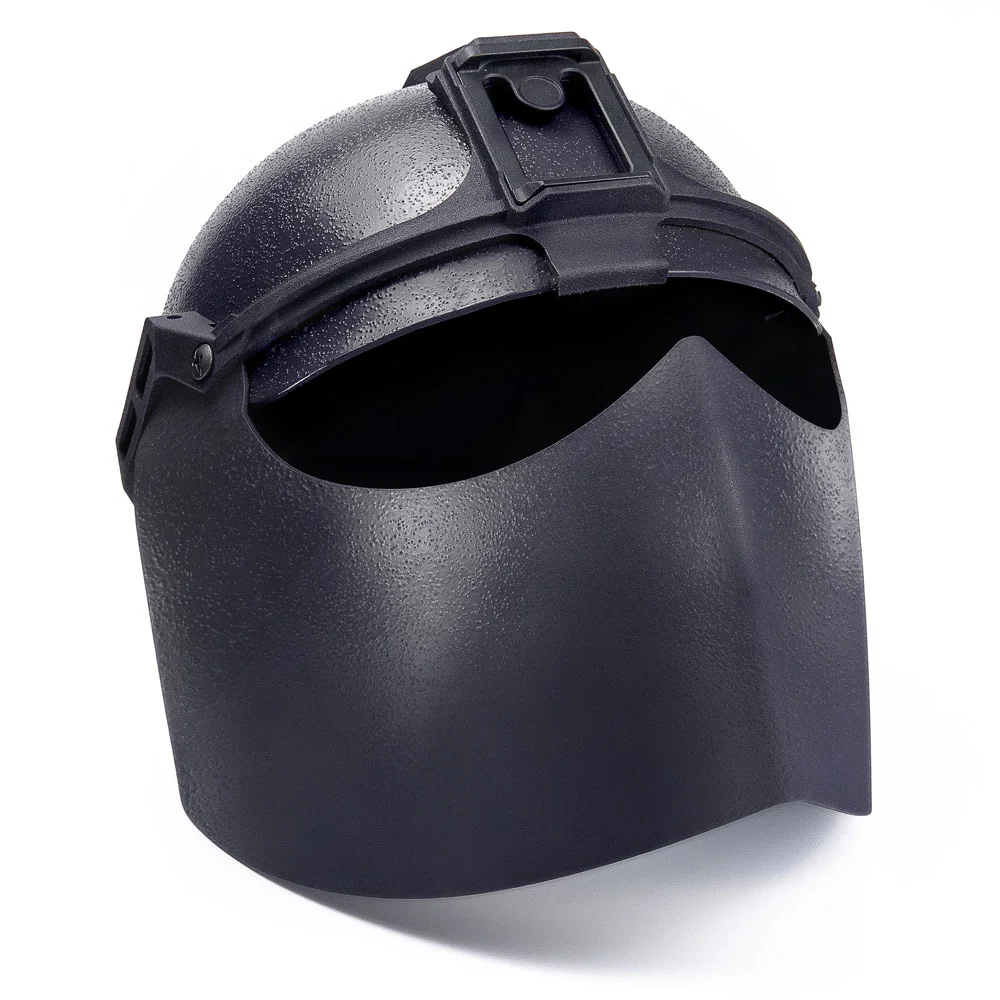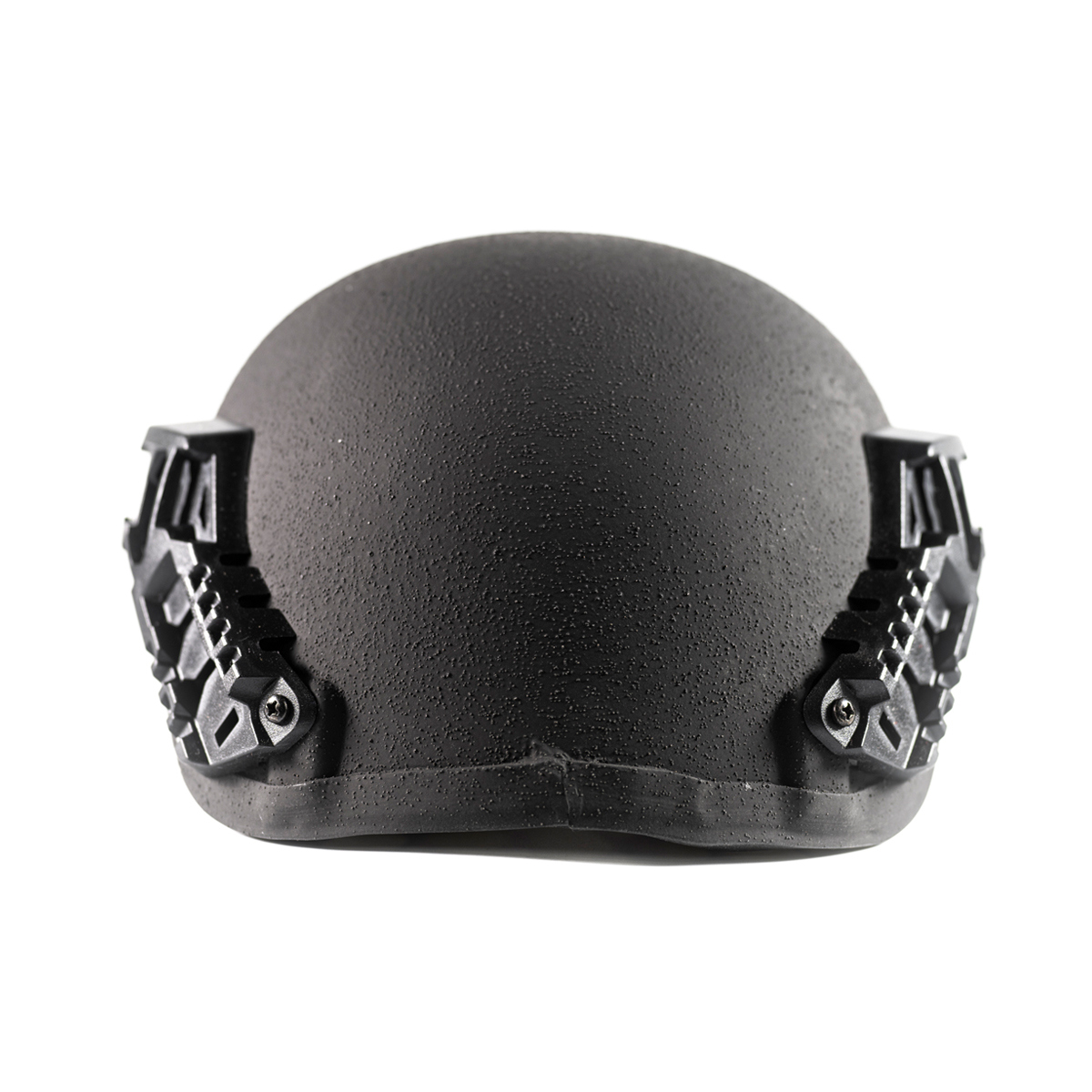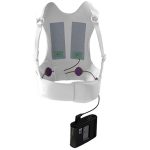Historical Development
The concept of the ballistic helmet can trace its roots back to ancient times when warriors wore helmets made from leather and metals to protect against swords and arrows. However, the modern era of ballistic helmets began during World War I, when the inherent need for head protection against shrapnel and bullets was recognized. These early versions were rudimentary at best but marked a pivotal shift towards acknowledging the importance of headgear in battlefield survivability. The technological advancements through World War II, the Vietnam War, and into the present day have seen ballistic helmets evolve from simple steel shells to advanced composite materials designed to offer maximum protection with minimum weight.
Technological Advancements in Materials
The transition from steel to advanced composite materials signifies one of the most significant advancements in ballistic helmet technology. Modern helmets utilize materials such as Kevlar, Twaron, and UHMWPE (Ultra-High-Molecular-Weight Polyethylene), offering enhanced protection against ballistic threats while reducing the overall weight. These materials possess high strength-to-weight ratios and are capable of absorbing and dispersing the energy from a bullet or shrapnel, minimizing the trauma to the wearer’s head. The development of these materials has been a game-changer, providing soldiers and law enforcement officers with headgear that doesn’t compromise mobility for protection.

Importance in Modern Warfare and Law Enforcement
In the context of modern warfare and law enforcement operations, the ballistic helmet has become an indispensable piece of personal protective equipment. Its significance extends beyond the mere ability to stop bullets and shrapnel; it also includes protection against blunt trauma, bomb blasts, and even motorcycle crashes in a civilian context. The helmet’s design, incorporating visors and mounts for night vision goggles and cameras, has also enhanced tactical capabilities, enabling soldiers and officers to operate more effectively in diverse environments. This integration of technology and protection underscores the helmet’s role in modern operational strategies, where information and adaptation are as crucial as survival.
Design Innovations and Customizations
Integration with Communication and Surveillance Technologies
Modern ballistic helmets are no longer just about protection. They have evolved into multi-functional gear that integrates communication devices, surveillance cameras, and night vision systems. These integrations allow for seamless coordination and situational awareness among team members during missions. The design considerations extend to ensuring that the added technologies do not compromise the helmet’s primary function—protection. This has led to innovations in how devices are mounted and wired, including modular systems that allow for easy customization based on mission requirements. The focus is on creating a helmet that serves as a hub for both protection and communication.

Customization for Different Environments and Missions
The adaptability of ballistic helmets to different environments and missions is crucial. Designers achieve this through modular designs that allow for parts to be added or removed as needed. For example, a helmet used in desert environments might include a cover that provides both camouflage and protection from the sun. While one used in urban settings might have additional face and neck protection against close-quarters combat threats. This level of customization ensures that the helmet’s protection and functionality are maximized across various operational scenarios, from direct combat to peacekeeping missions.
Ergonomic Considerations for Enhanced Wearability
The wearability of a ballistic helmet is critical, especially during extended periods of use. Ergonomic considerations include weight distribution, ventilation, and padding. These elements are designed to minimize fatigue, heat stress, and discomfort, thereby maintaining operational effectiveness. The development of adjustable padding systems and helmets that can accommodate various head shapes and sizes also plays a vital role in ensuring comfort. By focusing on ergonomics, designers have made significant strides in creating helmets that personnel can wear for longer durations without compromising on safety or operational efficiency.

Future Directions in Ballistic Helmet Technology
Advanced Materials and Lightweight Solutions
The quest for even lighter yet more protective materials is ongoing. Research into nanomaterials and non-Newtonian fluids promises to produce helmets that can offer superior ballistic protection while reducing weight. These future materials aim to provide better energy absorption and dispersion. Potentially reducing the risk of traumatic brain injury from blunt impacts. The challenge lies in developing materials that can be produced at scale and at reasonable costs. Making advanced ballistic helmets accessible to all soldiers and law enforcement personnel.
Smart Helmets: Integrating Augmented Reality and Biometrics
The concept of the “smart helmet” is emerging, integrating augmented reality (AR) displays, biometric monitoring, and automated threat detection. These helmets could provide real-time tactical information, health monitoring, and even automatic adjustment to ambient light and sound. This integration of AR and biometrics would represent a significant leap forward, transforming the helmet from passive protective gear to an active component of a soldier’s or officer’s operational toolkit.

Sustainability and Recyclability Concerns
As with many modern materials, there’s a growing concern over the sustainability and recyclability of ballistic helmet components. Future development will likely need to consider the environmental impact of helmets throughout their lifecycle, from manufacturing to disposal. Designers are exploring the use of eco-friendly materials and manufacturing processes that reduce the carbon footprint. Creating recyclable helmet components without compromising protection is another challenge that could lead to innovative design and material solutions. Additionally, programs for refurbishing and reusing components of decommissioned helmets can extend their service life and minimize waste. The industry is at the cusp of embracing green technologies. Which may soon lead to ballistic helmets that are as good for the planet as they are for the personnel wearing them.
Challenges and Solutions in Ballistic Helmet Design
Balancing Weight with Protection
One of the perennial challenges in ballistic helmet design is balancing the need for maximum protection with the necessity of minimizing weight. Heavy helmets can cause neck strain and limit a user’s agility and endurance. As a result, designers and researchers are relentlessly working to reduce weight by refining the shape of helmets for better weight distribution and exploring new materials that provide equivalent or improved protection at lower densities. Innovative manufacturing techniques, like 3D printing, are also being tested to create bespoke helmets that are lighter and fit better. Ultimately improving both safety and comfort.

Cost and Accessibility for Various Departments
Cost is a major factor in the widespread distribution of advanced ballistic helmets. Particularly for smaller law enforcement departments with limited budgets. High-end materials and added technological features can be prohibitively expensive. A possible solution lies in government-subsidized programs or collective purchasing agreements that increase buying power and reduce costs. Innovations in manufacturing technology could also play a role. Perhaps making helmets less costly to produce over time. This accessibility is crucial for ensuring that all front-line personnel have the highest level of head protection.
Standardization vs. Customization
Standardization is essential for ease of manufacturing, cost reduction, and interoperability between different units and forces. However, it can conflict with the need for customization to fit different roles, head sizes, and additional equipment. This is being addressed by creating standardized helmet platforms with modular components that can be customized. Such an approach provides economies of scale for the main helmet structures, while still allowing individual adjustment and mission-specific configuration. This balance of standardization and customization ensures that ballistic helmets can meet the broadest range of needs possible.


